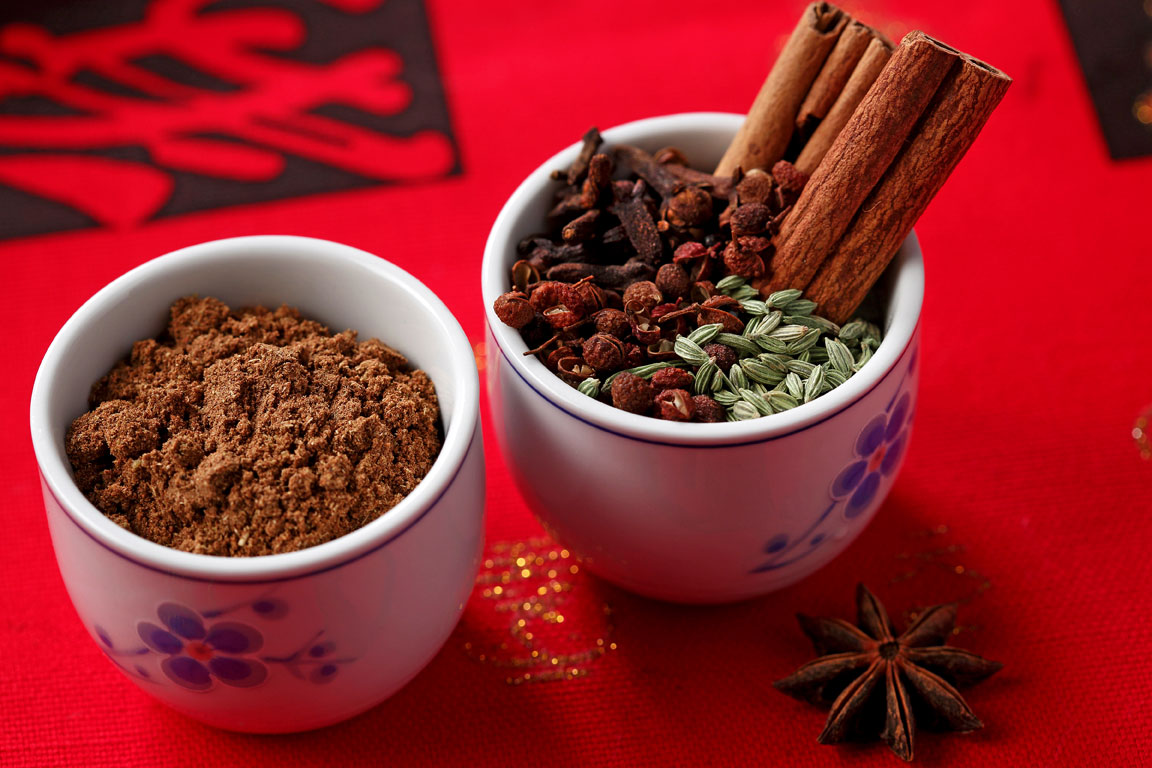Spice Glossary
In ancient times, a spice was defined as anything that had a strong aroma, meaning herbs, spices and incenses all qualified. Most importantly, spices could not be perishable and needed to be able to survive transport for many months with little loss of pungency. They helped flavor food and preserve meat. In addition, spices were used for making perfume and healing ointments as well as embalming the dead.
CanolaInfo’s Spice Route recipe collection includes the spices below:
BLACK PEPPERCORN
Black peppercorn is native to south India but is now mostly produced in Vietnam. During the Middle Ages, a man’s wealth was measured by how much pepper he owned. The Romans even demanded peppercorn as ransom on some occasions. It is now the most common spice added to European cuisine and the top selling spice in the United States – a far cry from its original scarcity. When Christopher Columbus returned from his trip to the Americas, he was so disappointed that he did not find peppercorn that he brought back chilies and called them peppers.
CARDAMOM
Cardamom is a warm spice, similar to cinnamon and nutmeg. It is also among the more expensive spices, but behind saffron and vanilla beans. In India, cardamom is used in savory dishes, desserts and beverages. It is the principal ingredient in curry powders and used to flavor meat, vegetables, baked goods, coffee and other beverages. The spice is native to India and Malaysia.
CHINESE FIVE-SPICE POWDER
A traditional Chinese five-spice powder consists of star anise, cloves, cinnamon, Szechuan pepper and fennel seeds. It is used as a spice rub for meats, although not typically used in day-to-day Chinese cooking.
CINNAMON
Although expensive, cinnamon was used for embalming purposes to cleanse the interior of the abdomen. Roman Emperor Nero burned a year’s supply of it at his wife’s funeral. Currently, Sri Lanka is the largest producer of cinnamon.
CORIANDER
Coriander’s history stretches back to the Bible. It is mentioned in Sanskrit texts almost 7000 years ago. It is used to flavor beverages, pickles, sweets and even tobacco products. In the United States, coriander is the seed form of cilantro.
CUMIN
Ancient Egyptians used cumin as a spice as well as in the mummification process as a fragrance, sometimes to rinse the abdomen. The Greeks and Romans also used it for medicinal purposes, such as to aid in digestion. Cumin is the main component of chili and curry powders.
GINGER
Ginger is mentioned in the Koran, meaning Arabs knew of its existence as early as 650 AD. In addition to flavoring food, ginger acted as a food preservative and was thought to be an aphrodisiac. The Jamaican variety was the first Asian spice grown in the New World and imported back to Europe.
NUTMEG
Nutmeg comes from the same plant as mace and has a warm, spicy aroma that is used in sweet and savory cooking. It has been utilized by the Arabs since the 7th century. In the 1600s, a tiny island called Run was the most valuable real estate in the world due to the nutmeg trees that grew there. England gave it up to The Netherlands as part of a peace treaty. In exchange, England received a different tiny island known as Manhattan.
RED PEPPER (CAYENNE)
Cayenne pepper is a pungent spice that adds heat to a dish and is known to raise body temperature. Significant doses are said to increase metabolism.
SAFFRON
Saffron is currently the most expensive spice on the market, sometimes worth more than Kobe beef. The price is due to the highly specialized process of obtaining it. For one pound of saffron, 72,000 flowers are needed as each flower only has three strands of saffron that needs to be hand-picked. The more red the saffron thread, the more flavor it contains. In the Middle Ages, falsifying saffron was punishable by death.
TURMERIC
Turmeric is known for its rich, golden color. It is closely related to ginger and is the base for curries and masalas. During Indian weddings, the bride and groom use turmeric paste to cover their face and arms.

